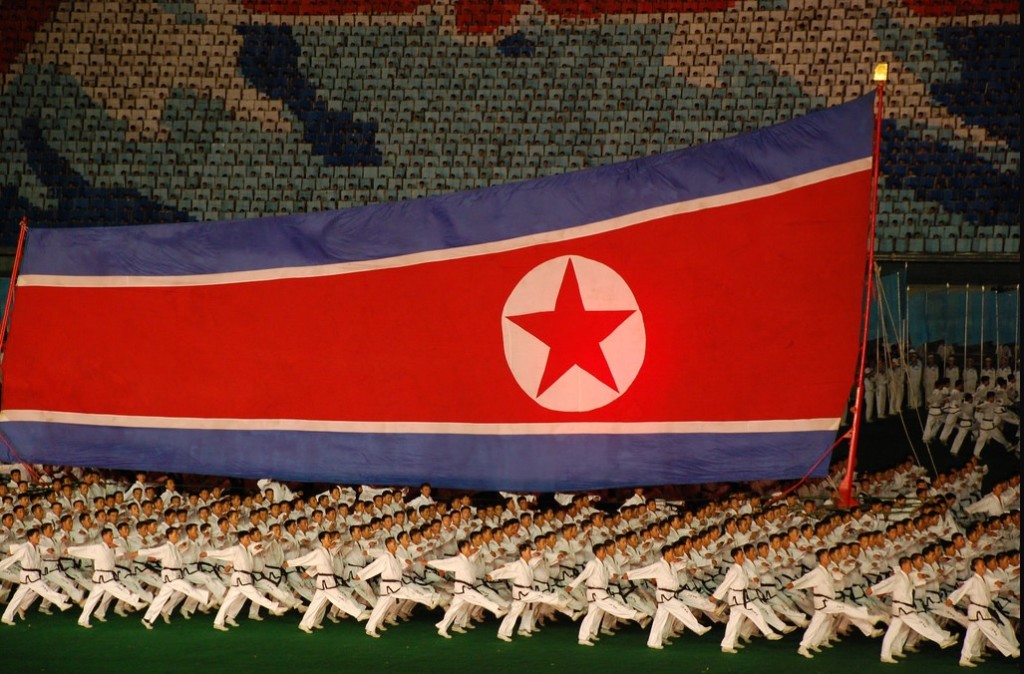
Over the past few months, the US and North Korea have been exchanging a battle of rhetoric leaving many wondering whether war is looming across the Asia-Pacific. The UN Security Council recently passed the harshest level of sanctions against North Korea, targeting oil imports, textile exports, overseas laborer contracts, smuggling operations and joint ventures. Given the US’s leadership on passing these sanctions, the North Koreans promised vengeance with their UN Ambassador proclaiming that the “DPRK will make the US suffer the greatest pain it ever experienced in its history.” This exchange of rhetoric is not new, but with North Korea making steady and rapid gains on its weapons program, as evidenced by their most recent test missile flying over Japan and nuclear bomb test, it is critical to evaluate the exact threats that emanate from this reclusive state.
It is clear what all-out war would mean for the Korean peninsula: hundreds of thousands of casualties in Seoul alone and potentially millions of total casualties and refugees. While a lot of media attention is focused on the worst-case scenario, the chances of total war are much lower than for a series of other potential developments that also would have less serious but nonetheless very concerning ramifications such as proliferation of weapons of mass destruction, continuation of low level military conflict, and further tensions between China and the US.
Proliferation of WMDs
A North Korean state that has active nuclear missile delivery systems seriously challenges existing norms surrounding nuclear non-proliferation. North Korea will enter an elite group of states that have the capability to launch a nuclear ICBM. While the North Koreans have announced their exit from the Nuclear Non-Proliferation Treaty (NPT) in 2003, the expectation has always been that North Korea is still bound to international law to not develop nuclear weapons and missile delivery systems. When a majority of countries support an international treaty, it technically applies to all countries. However, North Korea on the verge of developing nuclear ICBMs serves as a particularly ominous sign for the non-proliferation movement.
While it is unlikely that North Korea will actually use these weapons, being that they are strapped for cash, they can sell its weapons systems (missiles and nuclear weapons) to other rogue countries like Iran and Syria: states it has worked with in the past. Kim Jong-un has made his central strategy about developing the economy after securing the ability to deter the US with nuclear missiles. Leveraging his weapons systems for money can help serve that purpose. Moreover, with the protection of a nuclear deterrence, he can be emboldened to also sell other weapons of mass destruction such as chemical weapons with little worry of major US intervention.
Such actions set a dangerous precedent on the international stage. North Korea’s nuclear program weakens the entire NPT regime and gives the impression that the US is powerless beyond sermons and sanctions to enforce non-proliferation. Elements of the conservative party in South Korea have already clamored for South Korea to nuclearize. While they currently wield little political power to implement such a plan, the possibility of a nuclear South Korea only climbs with North Korea’s rising military power. Every addition to the nuclear club will result in a greater chance that more states will join, bringing the world one step closer to regional tensions and arms races.
Continued Military Conflict
The Korean Peninsula of the 60s and the 70s was a far more dangerous place when South and North Korea were at near power parity, compared with the large power disparity in the region today. There were relatively regular conflicts on the DMZ, kidnappings, a plane hijacking and an assassination attempt against President Park of South Korea. Moreover, the USS Pueblo was taken and its sailors taken hostage. Since then, the power gap between the North and South grew and the North Koreans have reduced their provocative actions. Nonetheless, every so often they disrupt the peace, most recently when they sunk a South Korean naval vessel, the ROKS Cheonan in 2010.
A North Korea with credible nuclear deterrence will have greater breathing room to engage in more military activities without fear of a US/South Korea reprisal. The North Koreans are regularly incensed by the joint US-ROK military exercises and may engage in military provocations, utilizing artillery (like they did in 2010) or even saboteurs and spies. They have strong incentives engage in provocation as it can serve as crucial leverage against the South Koreans and the US to stop their military exercises. The North Koreans predictably respond to US and South Korean military maneuvers with provocations of their own. That leverage can be used to bring the US and South Korea to the negotiating table.
Chinese-US Tension
The Korean division was born from great power politics between the Soviet Union and the United States. Despite the end of the Cold War, great power politics are still embedded in the situation with the Chinese supporting the North Korean regime economically, and by extension militarily and the United States supporting South Korea militarily. While the Chinese have repeatedly denounced North Korea’s actions and have supported sanctions, they have not cut the critical supplies of oil and other necessary resources that the Kim regime relies on. China is clearly reluctant to have a regime change in North Korea and they are not interested in having a pro-US unified Korea along its border.
A nuclear ICBM-armed North Korea only serves to be the perfect symbol of Chinese resistance to the US’s desires in the region as it becomes clear that Beijing is not serious about North Korean de-escalation. Combined with issues in the South China Sea, Chinese and US relations are not likely to improve in the coming years. For South Korea, who experienced Chinese economic pressure in the past few months as a result of deploying the THAAD (Terminal High-Altitude Area Defense), tensions between the US and China will be hard to navigate. The South Koreans are especially vulnerable to its economic ties with China.
No End in Sight
In the Chinese game of Go, one of the key concepts is having sente (先手). Sente refers to the initiative, forcing the other player to respond, giving the player playing Sente the power to determine the flow of the game. It is hard to believe, but North Korea has Sente, and the US and South Korea are in a position of responding to whatever move the North Koreans play. It only makes sense because the US and South Korea are risk averse with Seoul’s fate on the line, while the North Koreans are clearly showing the willingness to push the button.
It is very unlikely that war will be the result, but this article has just outlined three ways in which, beyond the worst-case scenario of war, the North Korean issue poses threats that seek to only complicate the regional and international political scene. The world has to wait and see if an opportunity will arise for South Korea and the US to take back the initiative on the issue, but until then, it’s North Korea’s move.
The views expressed by the author do not necessarily reflect those of the Glimpse from the Globe staff, editors or governors.









